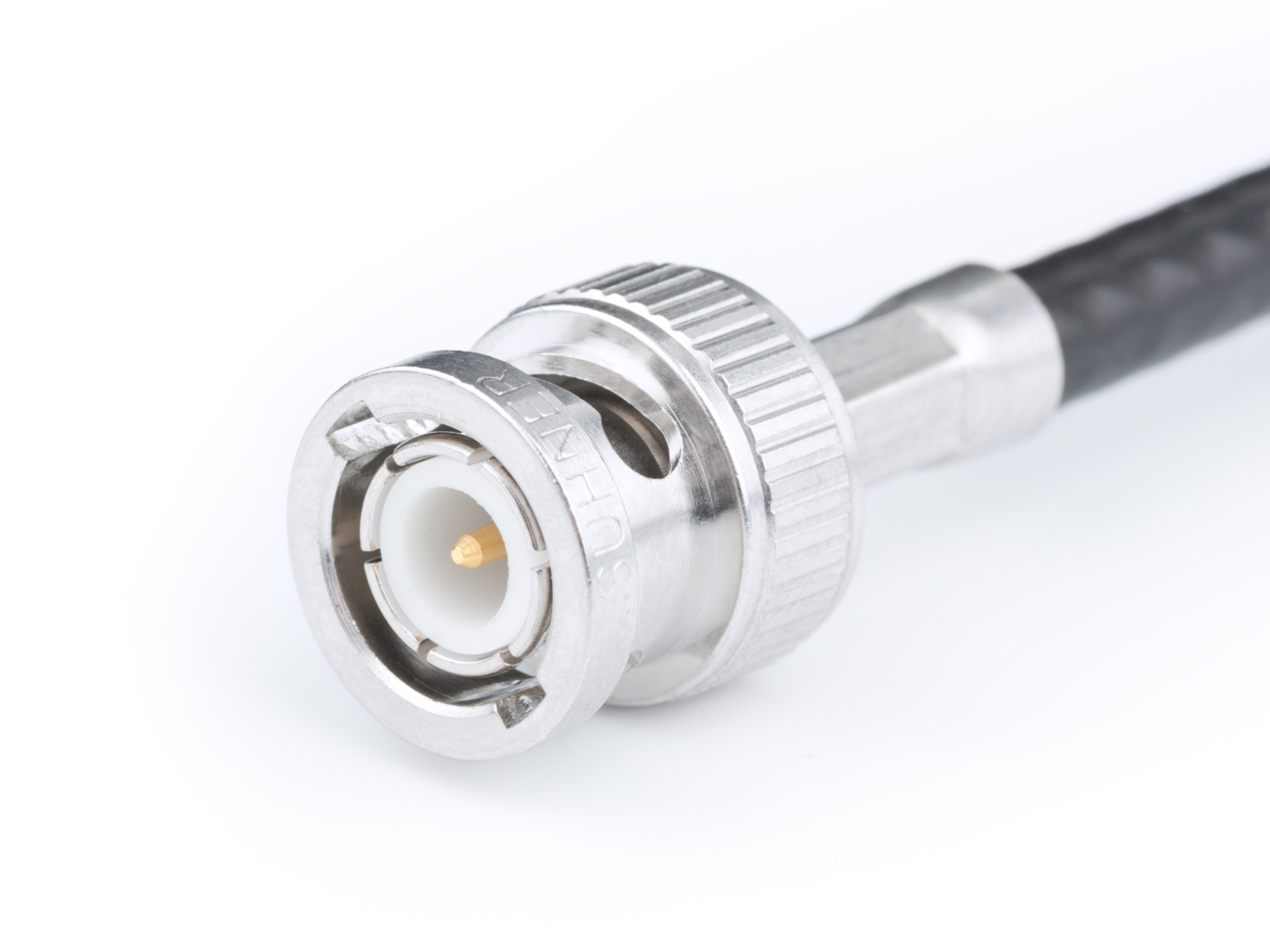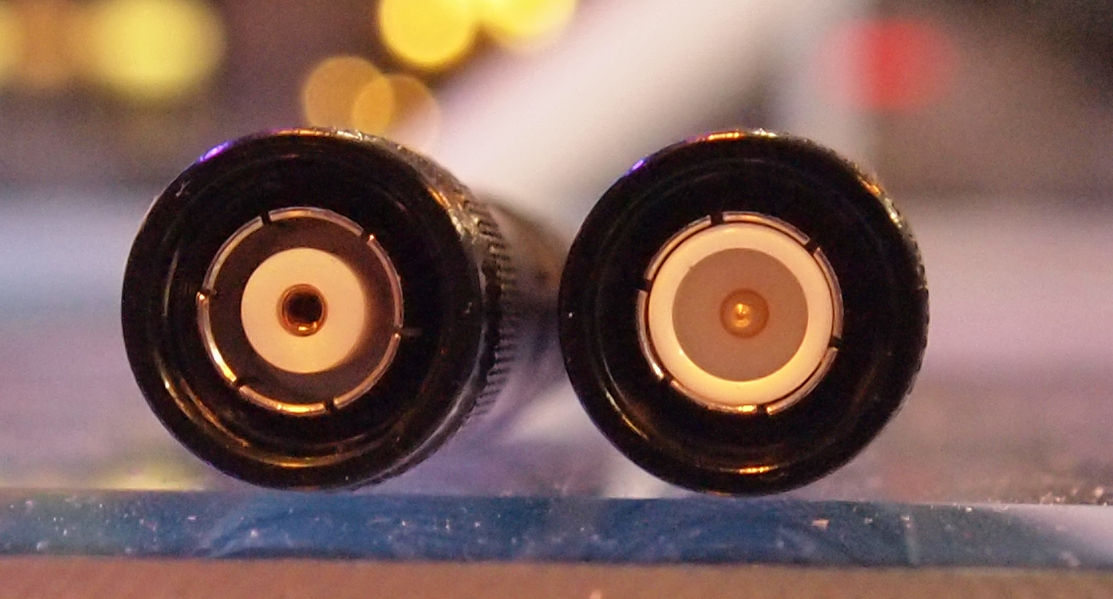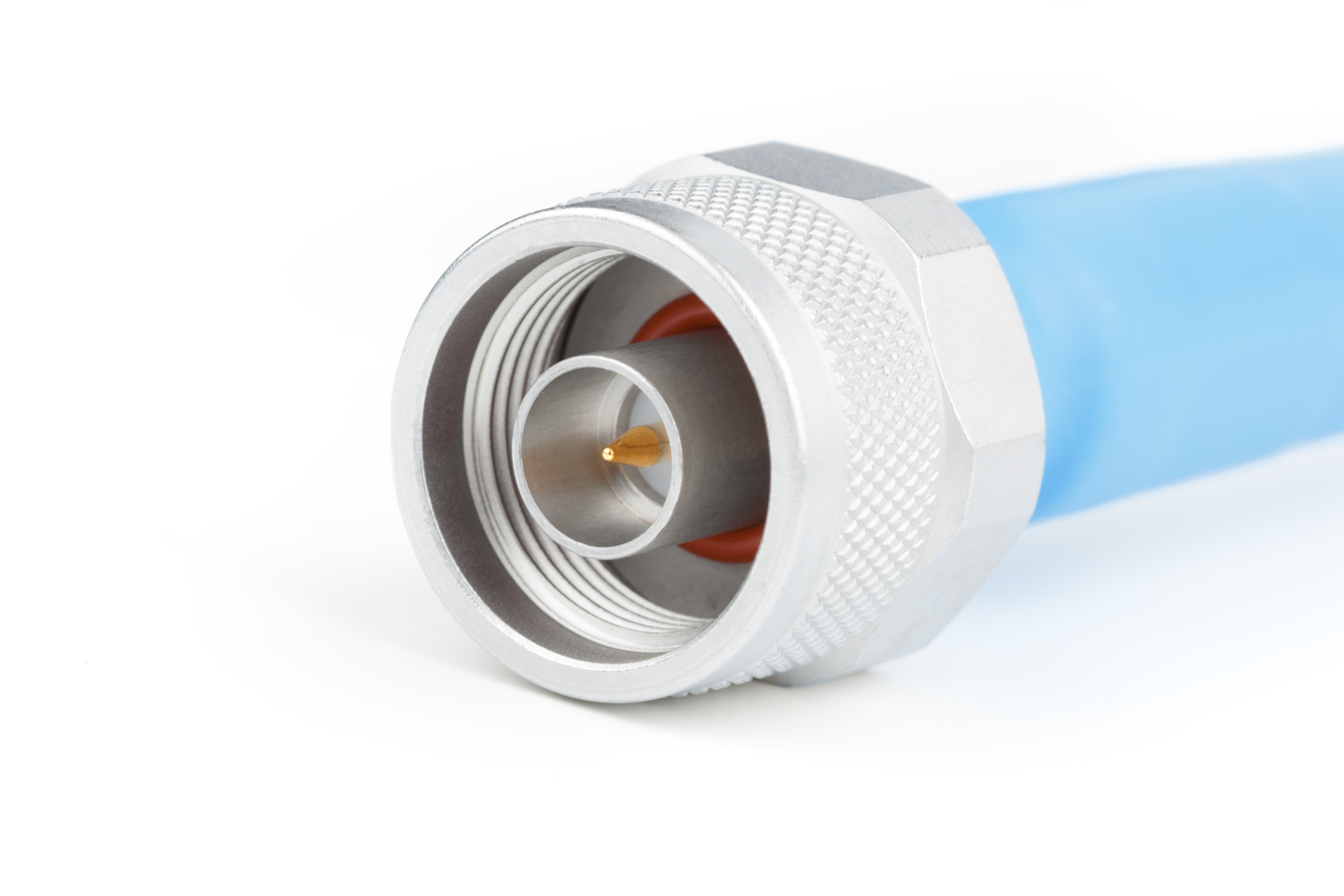|
SMB Connector
SMB (''SubMiniature version B'') connectors are coaxial RF connectors developed in the 1960s. SMB connectors are smaller than SMA connectors. They feature a snap-on coupling and are available in either 50 Ω or 75 Ω impedance. They offer excellent electrical performance from DC to 4 GHz. An SMB jack has a male center pin, while an SMB plug has a female basket. Connectors are available for two SMB cable sizes: # Cable 2.6/50+75 S (3 mm outer / 1.7 mm inner diameter) and # Cable 2/50 S (2.2 mm outer / 1 mm inner diameter) SSMB The SSMB connector is a small version of the standard SMB connector with a 'snap-on' coupling. # Impedance: 50 Ohm # Operating frequency: DC–12.4 GHz See also * SMA connector, SMC connector * BNC connector The BNC connector (initialism of "Bayonet Neill–Concelman") is a miniature quick connect/disconnect radio frequency connector used for coaxial cable. It is designed to maintain the same characteris ... [...More Info...] [...Related Items...] OR: [Wikipedia] [Google] [Baidu] |
RF Connector
A coaxial RF connector (radio frequency connector) is an electrical connector designed to work at radio frequencies in the multi-megahertz range. RF connectors are typically used with coaxial cables and are designed to maintain the shielding that the coaxial design offers. Better models also minimize the change in transmission line impedance at the connection in order to reduce signal reflection and power loss. As the frequency increases, transmission line effects become more important, with small impedance variations from connectors causing the signal to reflect rather than pass through. An RF connector must not allow external signals into the circuit through electromagnetic interference and capacitive pickup. Mechanically, RF connectors may provide a fastening mechanism (thread, bayonet, braces, blind mate) and springs for a low ohmic electric contact while sparing the gold surface, thus allowing very high mating cycles and reducing the insertion force. Research activity ... [...More Info...] [...Related Items...] OR: [Wikipedia] [Google] [Baidu] |
SMB Connector
SMB (''SubMiniature version B'') connectors are coaxial RF connectors developed in the 1960s. SMB connectors are smaller than SMA connectors. They feature a snap-on coupling and are available in either 50 Ω or 75 Ω impedance. They offer excellent electrical performance from DC to 4 GHz. An SMB jack has a male center pin, while an SMB plug has a female basket. Connectors are available for two SMB cable sizes: # Cable 2.6/50+75 S (3 mm outer / 1.7 mm inner diameter) and # Cable 2/50 S (2.2 mm outer / 1 mm inner diameter) SSMB The SSMB connector is a small version of the standard SMB connector with a 'snap-on' coupling. # Impedance: 50 Ohm # Operating frequency: DC–12.4 GHz See also * SMA connector, SMC connector * BNC connector The BNC connector (initialism of "Bayonet Neill–Concelman") is a miniature quick connect/disconnect radio frequency connector used for coaxial cable. It is designed to maintain the same characteris ... [...More Info...] [...Related Items...] OR: [Wikipedia] [Google] [Baidu] |
Coaxial
In geometry, coaxial means that several three-dimensional linear or planar forms share a common axis. The two-dimensional analog is ''concentric''. Common examples: A coaxial cable is a three-dimensional linear structure. It has a wire conductor in the centre (D), a circumferential outer conductor (B), and an insulating medium called the dielectric (C) separating these two conductors. The outer conductor is usually sheathed in a protective PVC outer jacket (A). All these have a common axis. The dimension and material of the conductors and insulation determine the cable's characteristic impedance and attenuation at various frequencies. Coaxial rotors are a three-dimensional planar structure: a pair of helicopter rotors (wings) mounted one above the other on concentric shafts, with the same axis of rotation (but turning in opposite directions). In loudspeaker A loudspeaker (commonly referred to as a speaker or speaker driver) is an electroacoustic transducer that conve ... [...More Info...] [...Related Items...] OR: [Wikipedia] [Google] [Baidu] |
SMA Connector
SMA (''SubMiniature version A'') connectors are semi-precision coaxial RF connectors developed in the 1960s as a minimal connector interface for coaxial cable with a screw-type coupling mechanism. The connector has a 50 Ω impedance. SMA was originally designed for use from DC (0 Hz) to 12 GHz, however this has been extended over time and variants are available to 18 GHz and 26.5 GHz. There are also mechanically compatible connectors such as the K-connector which operate up to 40 GHz. The SMA connector is most commonly used in microwave systems, hand-held radio and mobile telephone antennas and, more recently, with WiFi antenna systems and USB software-defined radio dongles. It is also commonly used in radio astronomy, particularly at higher frequencies (5 GHz+). Connector design The interface dimensions for SMA connectors are listed in MIL-STD-348. The SMA connector employs a inch diameter, 36-thread-per-inch threaded barrel. The ma ... [...More Info...] [...Related Items...] OR: [Wikipedia] [Google] [Baidu] |
SMC Connector
SMC (''SubMiniature version C'') connectors are coaxial RF connectors developed in the 1960s. The interface specifications for the SMC and many other connectors are referenced in MIL-STD-348. They use a #10-32 UNF threaded interface (screw type). They offer electrical performance from DC to 10 GHz. Male (a.k.a. plug) SMC connectors have a socket for the center contact, and Female (a.k.a. jack) SMC connectors have a pin for the center contact. SMC jack connectors have an external thread while SMC plug connectors have the mating hex nut. Available in 50-Ohm and 75-Ohm characteristic impedance, they provide an interconnect means for small form factor coaxial cables (e.g. 50-Ohm RG-174, 75-Ohm RG-179) and printed circuit boards where small footprint is important. The term Subvis connector appears to be European usage; the connectors appear to be electrically and mechanically equivalent to SMC. See also * SMA connector, SMB connector *BNC connector The BNC connector (init ... [...More Info...] [...Related Items...] OR: [Wikipedia] [Google] [Baidu] |
BNC Connector
The BNC connector (initialism of "Bayonet Neill–Concelman") is a miniature quick connect/disconnect radio frequency connector used for coaxial cable. It is designed to maintain the same characteristic impedance of the cable, with 50 ohm and 75 ohm types being made. It is usually applied for video and radio frequency connections up to about 2 GHz and up to 500 volts. The connector has a twist to lock design with two lugs in the female portion of the connector engaging a slot in the shell of the male portion. The type was introduced on military radio equipment in the 1940s and has since become widely applied in radio systems, and is a common type of video connector. Similar radio-frequency connectors differ in dimensions and attachment features, and may allow for higher voltages, higher frequencies, or three-wire connections. Description The BNC connector features two bayonet lugs on the female connector; mating is fully achieved with a quarter turn of the coupling nut. It u ... [...More Info...] [...Related Items...] OR: [Wikipedia] [Google] [Baidu] |
TNC Connector
The TNC connector (acronym of "Threaded Neill–Concelman") is a threaded version of the BNC connector. Description The interface specifications for the TNC and many other connectors are referenced in MIL-STD-348. The connector has a 50 Ω impedance and operates best in the 0–11 GHz frequency spectrum. It has better performance than the BNC connector at microwave frequencies. Invented in the late 1950s and named after Paul Neill of Bell Labs and Carl Concelman of Amphenol, the TNC connector has been employed in a wide range of radio and wired applications. The TNC connector features a 7/16"-28 thread, not to be confused with a 7/16 DIN connector, which is the diameter of the mating surfaces as specified in millimeters. Variations Reverse-polarity TNC Reverse-polarity TNC (RP-TNC, sometimes RTNC) is a variation of the TNC specification which reverses the polarity of the interface. This is usually achieved by incorporating the female contacts normally found in jack ... [...More Info...] [...Related Items...] OR: [Wikipedia] [Google] [Baidu] |
N Connector
The N connector (also, type-N connector) is a threaded, weatherproof, medium-size RF connector used to join coaxial cables. It was one of the first connectors capable of carrying microwave-frequency signals, and was invented in the 1940s by Paul Neill of Bell Labs, after whom the connector is named. Design The interface specifications for the N and many other connectors are referenced in MIL-STD-348. Originally, the connector was designed to carry signals at frequencies up to 1 GHz in military applications, but today's common Type N easily handles frequencies up to 11 GHz. More recent precision enhancements to the design by Julius Botka at Hewlett Packard have pushed this to 18 GHz. The male connector is hand-tightened (though versions with a hex nut are also available) and has an air gap between the center and outer conductors. The coupling has a -24 UNEF thread. Amphenol suggests tightening to a torque of , while Andrew Corporation suggest for their hex nu ... [...More Info...] [...Related Items...] OR: [Wikipedia] [Google] [Baidu] |




